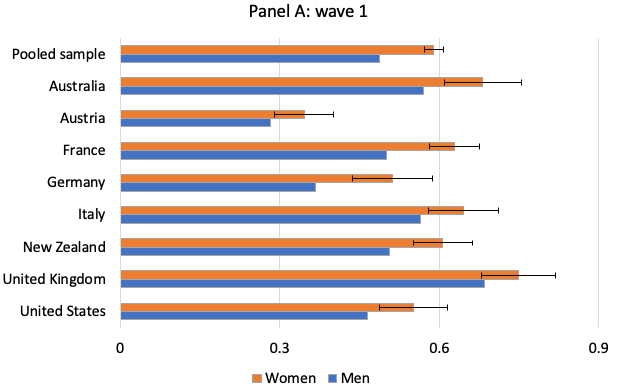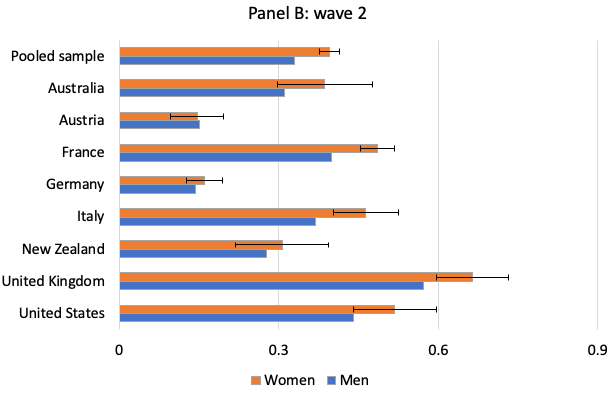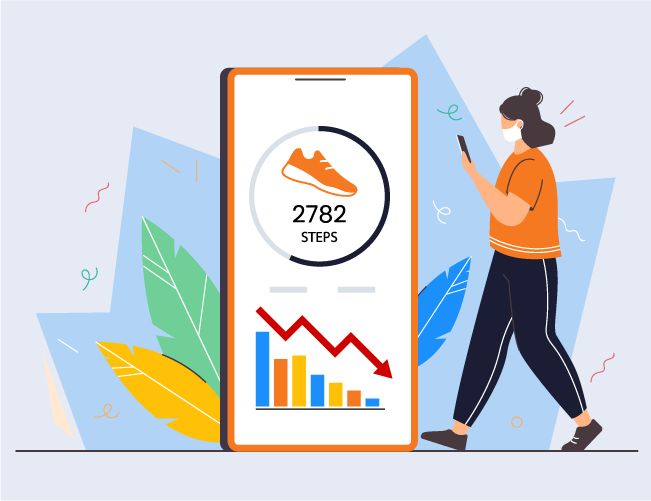A recent survey conducted by VoxEU.org reveals a significant difference between the way men and women are responding to the COVID-19 pandemic. With cases rising again across Europe and America, understanding these behaviors may help business leaders make better decisions about their company’s health and safety policies.
Over 21,000 individuals from eight different countries—Australia, Austria, France, Germany, Italy, New Zealand, the United Kingdom, and the United States—were interviewed in March and April of this year. The respondents answered questions about their individual beliefs and how serious they expected the health consequences of COVID-19 to be. They were asked whether or not they agreed with public policy measures such as closing schools, non-essential businesses, and public transportation; prohibiting the meeting of two or more people; shutting down borders; imposing quarantines on people entering a country; and requiring the use of face masks. Additionally, they were asked about their level of compliance with social distancing rules, wearing face masks, washing hands, and staying at home.
Figure 1: Compliance with public-health recommendations for men and women, by country, in March 2020 (Panel A) and in April 2020 (Panel B)


Women were significantly more likely to take the pandemic more seriously; in March, 59% of women said they were taking the pandemic seriously, compared to only 49% of men during that same time. In April, that number dropped to 40% of women and 33% of men. Women were also more likely to comply with public health recommendations. They also appear to be more committed to those behaviors, as the percentage of men following these recommendations decreased faster over time. While it is unclear what drives this difference in behavior, gender role stereotypes might play a part; it may be viewed as more “masculine” for men to appear less fearful of health concerns or to be less submissive to authority.
When Creating COVID-19 Policies, Keep Employee Demographics In Mind
The survey’s findings provide valuable insight for employers to keep in mind when implementing COVID-19 policies or other company health policies. Currently, another rise in cases is causing many places to go back to more restrictive measures and shutdowns. This means that companies are yet again facing closures and policy updates in order to maintain the health and safety of both employees and customers.
When making reopening plans or implementing new COVID-19 policies at work, it is especially important that employee demographics and their potential compliance with new policies are taken into consideration. A business with mostly male employees, for example, should make more of an effort to thoroughly communicate the importance of following COVID-19 protocols. Of course, employers don’t need to rely on gender alone. Other information such as age, location, education background, political beliefs, and physical health status can be just as informative when it comes to gauging how serious an employee base will take certain precautions.
Communicating the importance of compliance, however, may only go so far. If a business is concerned that employees will not follow certain policies, they may want to delay reopening plans or extend remote and virtual work options, if that is an option. Businesses can also institute health and safety changes that rely less on individual behavior to achieve their intended result—offices can be reorganized to naturally create greater physical separation between employees, meeting rooms and other congregation areas may be closed off or with restricted access, and the availability of shared snacks or drinks can be temporarily suspended.
Acknowledge Employees’ Unique Wellness Needs
Just as different employees are going to approach the current pandemic with varying levels of compliance, they’re also going to have unique health and wellness needs. The success of employee wellness programs, as well as company health policies, depends on whether or not they appropriately address the unique health and wellness needs of its participants. Working parents need more family support and caregiving resources, younger employees may want more flexibility with schedules or location, and high-stress jobs should include generous mental and emotional benefits. Additionally, wellness programs need to address the specific ways that the ongoing pandemic has affected their particular workforce and provide them with relevant solutions and resources. The more employees can engage with their program benefits, the more value these offerings provide when it comes to boosting productivity. Similarly, if a company can anticipate the specific health needs of their ideal employee base and plan benefits accordingly, they can promote a unique and more competitive wellness program that will attract and retain top talent.












